Introduction – The Art of Traveling on a Budget
Traveling is one of life’s greatest joys, but let’s be honest food costs can eat up your budget faster than anything else. Between restaurants, airport meals, overpriced snacks, and that tempting café with a view, travelers often spend far more on food than they originally planned. The good news? Eating cheap while traveling doesn’t mean giving up delicious meals or unique experiences. In fact, some of the most authentic food adventures happen when you ditch the fancy restaurants and embrace budget friendly options.
Think about it when you travel, food is more than just fuel. It’s part of the adventure. Sharing a plate of noodles on a bustling street corner in Bangkok, grabbing empanadas from a vendor in Mexico City, or shopping for fresh bread in a Parisian market these experiences stick with you far longer than any overpriced chain restaurant. The trick is finding the balance between enjoying local flavors and keeping your wallet intact.
In this guide, we’ll explore practical, real world strategies for eating cheap while traveling. From grocery shopping like a local to mastering the art of street food, you’ll discover how to stretch your travel budget without sacrificing taste or experience. Whether you’re a backpacker scraping by on a few dollars a day or a casual traveler trying to save money for attractions, these tips will help you eat well while spending less.
So grab your fork (or chopsticks), and let’s dig into the secrets of affordable dining around the world.
Planning Ahead for Food Savings

Image Source: Unsplash
If you think saving money on food while traveling starts once you arrive at your destination, think again. The real savings begin before you even board your flight. A little planning can mean the difference between blowing your budget on overpriced meals and enjoying delicious, affordable food every single day of your trip.
First, research the average cost of meals in your destination. Food prices vary drastically depending on where you’re going. A full dinner in Vietnam might cost just a few dollars, while the same meal in Switzerland could easily set you back $30 or more. Websites like Numbeo, travel blogs, and even Google Maps reviews can give you a realistic idea of what to expect.
Next, set a daily food budget. Be honest with yourself are you someone who enjoys snacking throughout the day, or do you prefer two big meals? Planning your eating style will help you allocate money wisely. For instance, you might budget $10 a day in Southeast Asia, but in Europe, you might need $25–$30 to eat comfortably without splurging.
Travel apps can also be a lifesaver. Apps like TripAdvisor, Yelp, and Google Maps allow you to filter restaurants by price range. Some apps, like HappyCow, are perfect for vegetarians and vegans searching for cheap plant based meals. Meanwhile, budget focused apps like EatWith and MealSharing connect you with locals offering affordable home cooked meals often at a fraction of restaurant prices.
Another overlooked strategy? Packing a few essentials before you leave. Granola bars, instant noodles, or trail mix can save you from overpriced airport food or emergency hunger situations. It’s not glamorous, but it’s practical.
Planning doesn’t kill spontaneity it just helps you make smarter choices. Once you know where to eat cheaply, you’ll spend less time stressing over money and more time enjoying the local food scene.
Grocery Shopping Like a Local
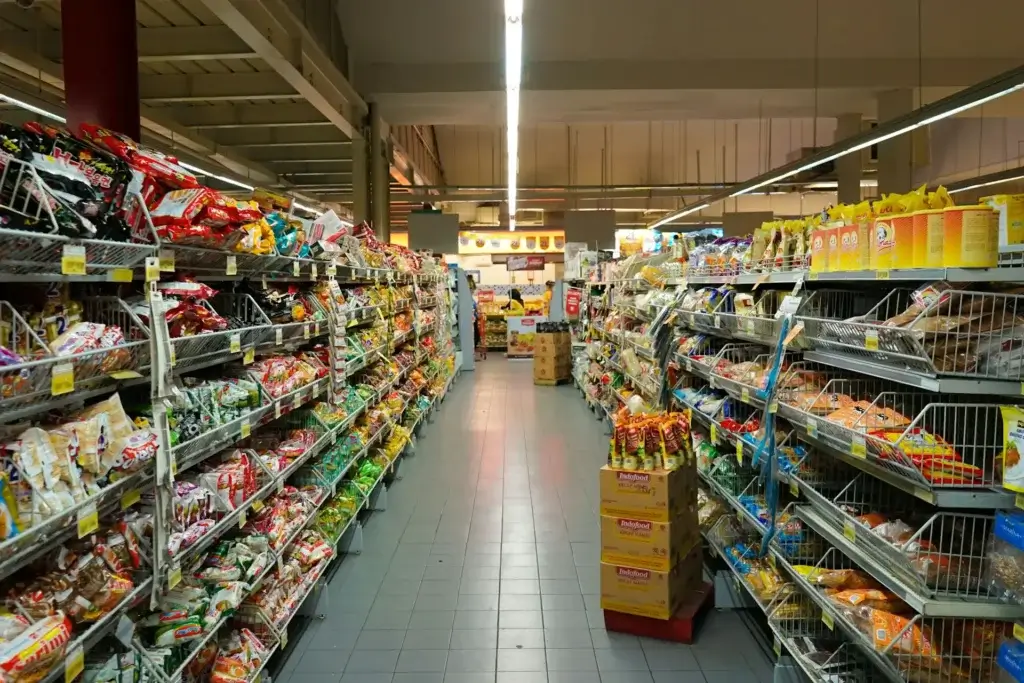
Image Source: Unsplash
One of the easiest ways to eat cheap while traveling is to shop where the locals shop: supermarkets, corner stores, and fresh markets. Tourists often overlook this strategy, but it’s a game changer. Instead of spending $15 on a single restaurant meal, you can buy a loaf of bread, cheese, fruit, and drinks for the same price and that can last you multiple meals.
Supermarkets around the world often reflect the culture of the country you’re visiting. In Japan, you’ll find inexpensive bento boxes and sushi packs. In France, fresh baguettes, cheese, and cured meats make for the perfect picnic. In Latin America, markets overflow with cheap tropical fruits you’d normally pay a fortune for back home.
The trick is to shop smart. Buy snacks like nuts, crackers, and fruit that are easy to carry around during the day. Pick up ingredients that can be turned into quick meals, such as sandwiches, salads, or wraps. Many grocery stores even have ready to eat sections with hot meals at a fraction of restaurant prices.
Another tip: try meal prepping while traveling. If you’re staying in a hostel or Airbnb with a kitchen, you can cook simple meals like pasta, rice bowls, or omelets. Not only does this save money, but it also gives you more control over what you eat especially helpful if you have dietary restrictions.
Beyond cost savings, grocery shopping is also an immersive cultural experience. Browsing local products, trying new snacks, or sampling regional delicacies straight from the store shelves helps you connect with the everyday life of the country. Plus, who doesn’t love the adventure of trying a mystery snack with packaging you can’t read?
Travel isn’t just about sightseeing it’s about living like the locals, and nothing brings you closer to that than shopping where they shop.
Street Food – The Traveler’s Best Friend
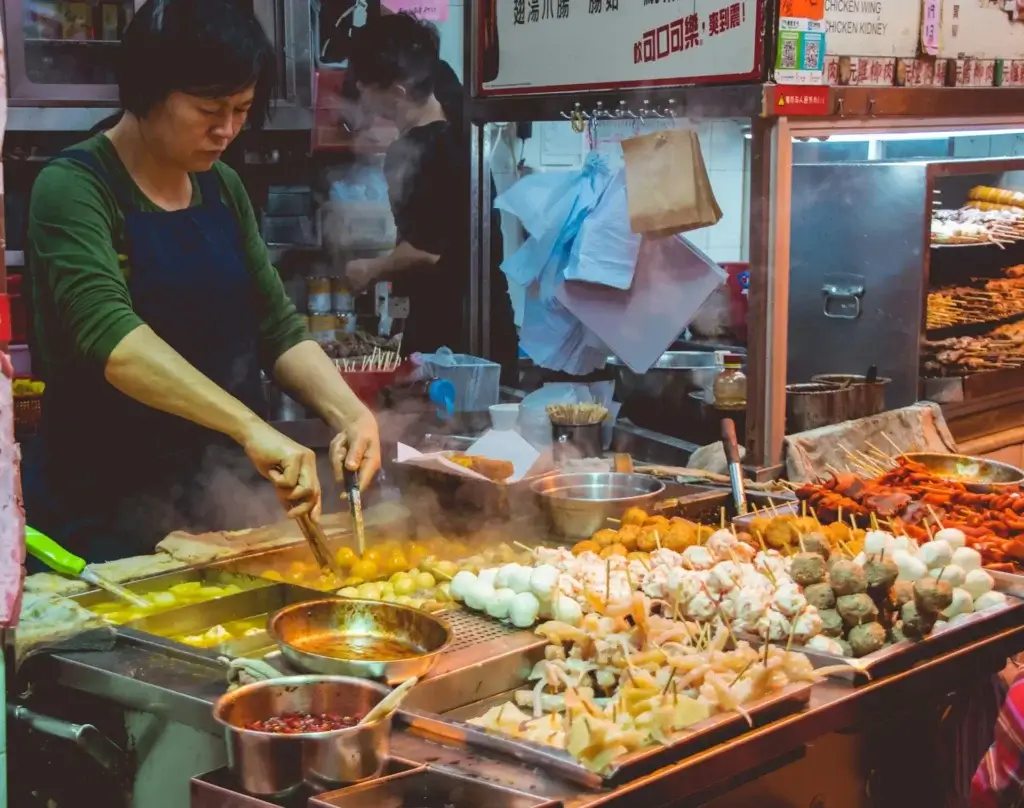
Image Source: Unsplash
If there’s one golden rule of budget travel, it’s this: embrace street food. Not only is it cheap, but it’s also often the most authentic representation of local cuisine. From steaming bowls of pho in Vietnam to tacos on a Mexican street corner, street food offers unforgettable flavors without the hefty price tag of restaurants.
Street food has several advantages. First, it’s fast and convenient perfect for travelers on the go. Second, it’s usually cooked fresh right in front of you, which means it’s often safer than pre prepared tourist meals sitting out all day. And third, it immerses you in the local culture. Eating shoulder to shoulder with locals at a food cart is a far richer experience than sitting in a sterile restaurant.
That said, it’s important to choose wisely. Look for stalls with long lines of locals that’s usually a sign the food is fresh and trusted. Pay attention to hygiene practices like gloves, clean cooking surfaces, and proper food storage. If something looks sketchy, it’s better to skip it than risk food poisoning ruining your trip.
Some destinations are especially famous for their street food. Bangkok, Mexico City, Istanbul, and Marrakech are world renowned street food capitals. Even in Europe, countries like Portugal and Poland offer affordable street eats that rival restaurant meals.
Street food isn’t just about saving money it’s about collecting stories and memories. That $1 kebab you bought at 2 a.m. might be the meal you remember most vividly years later. So next time you’re hungry and tempted to walk into a touristy café, take a detour down a side street you might just discover the best meal of your trip for pocket change.
Cooking While Traveling
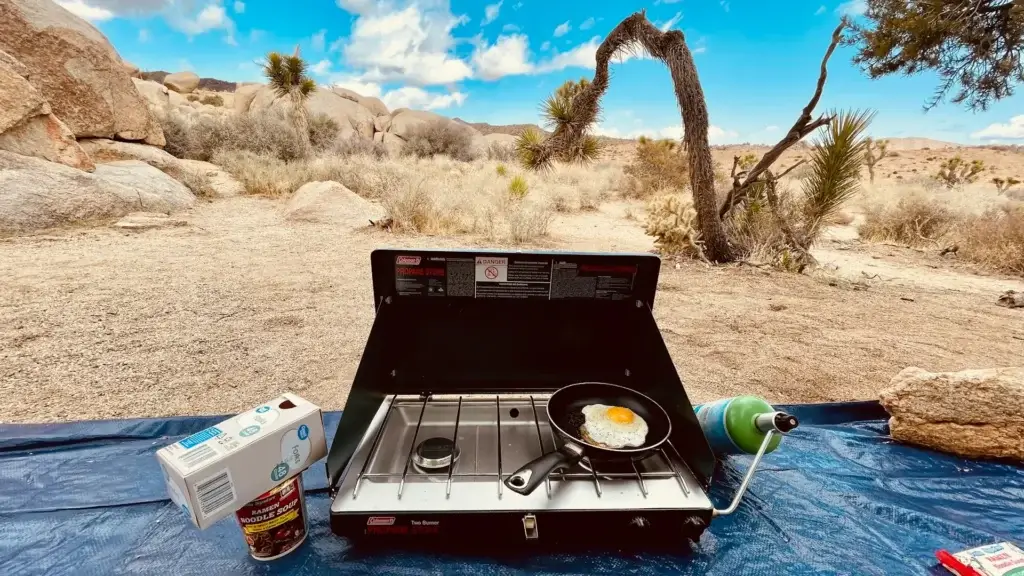
Image Source: Unsplash
Cooking while traveling might sound like a hassle, but it’s one of the most effective ways to stretch your food budget. With the rise of hostels, Airbnbs, and guesthouses offering kitchen access, cooking your own meals has never been easier. Even whipping up something simple a few times during your trip can save you a significant amount of money.
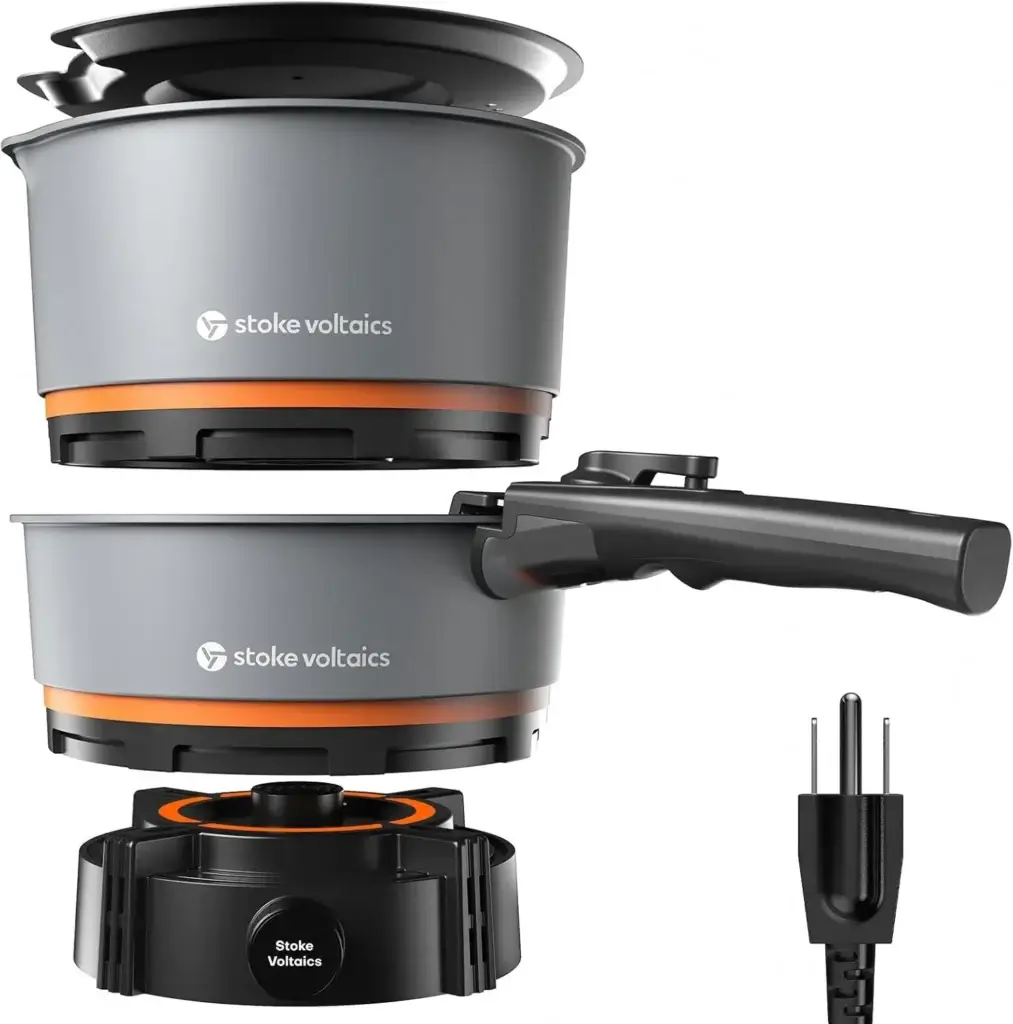
Image Source: Amazon
Nomad Cooking System, Electric Camping Stove 200-1000W with Pan & Pot, 120V Portable Outdoor Cooking Gear Set, Windproof Cookware for RV, EV, Overland, Vanlife, Car Camping
Start with easy, one pot meals that don’t require complicated ingredients or fancy equipment. Think pasta with tomato sauce, rice with veggies, stir fries, or sandwiches. These meals are cheap, quick, and filling. Plus, grocery stores around the world usually carry familiar staples, so you don’t have to worry about struggling to find ingredients.
Cooking can also be a social experience. In hostels, kitchens are often a hub of interaction where travelers from different countries cook, share meals, and exchange recipes. Imagine learning how to make curry from an Indian traveler or swapping pasta tips with an Italian backpacker it’s like a cultural exchange over dinner.
If you’re not up for cooking daily, even preparing just breakfast can save you a lot. Instead of paying $10 for a hotel breakfast, you can make eggs, toast, and coffee for under $3. Packing a homemade lunch before heading out to explore also means you avoid overpriced tourist restaurants.
Another hack is batch cooking. Make a larger portion for dinner and save the leftovers for lunch the next day. This not only saves time and money but also keeps you from resorting to expensive last minute food options when hunger strikes.
Cooking while traveling isn’t just about saving money it’s about independence, creativity, and sometimes even building connections. Plus, it gives you the freedom to enjoy local flavors in your own way, without spending a fortune at restaurants.
Eating at Local Markets
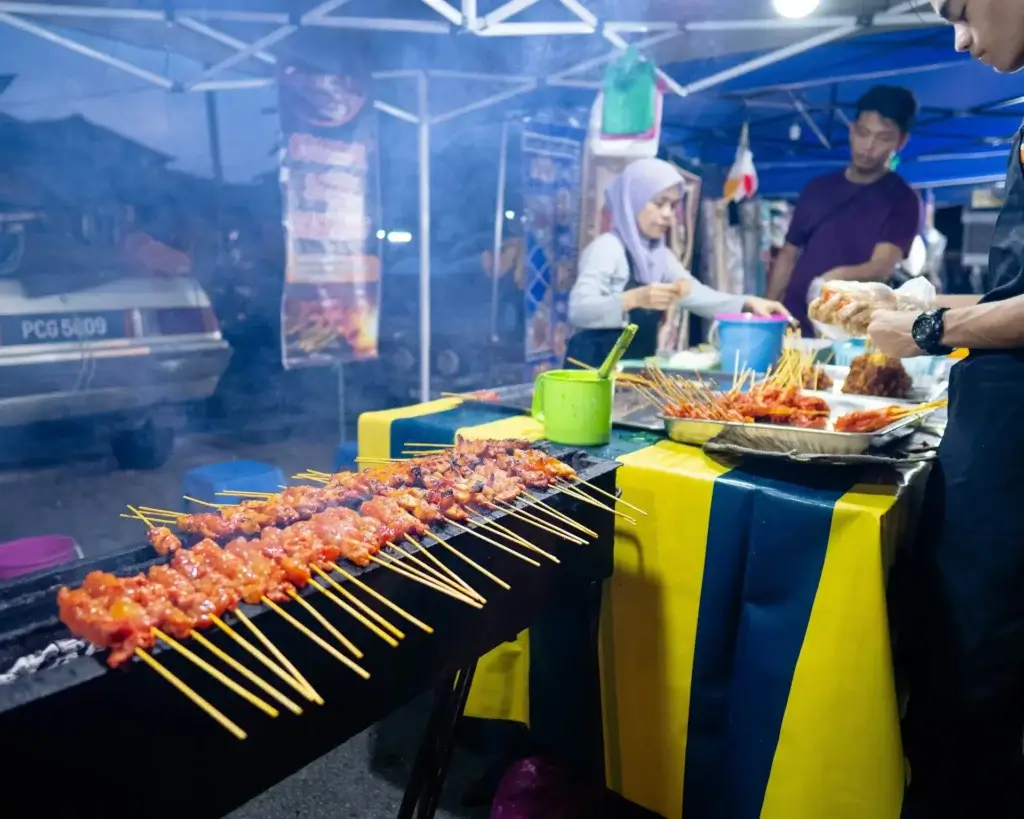
Image Source: Unsplash
If you really want to stretch your budget while traveling, head straight to the local markets. Unlike restaurants and touristy cafés, markets give you the chance to eat fresh, authentic food at a fraction of the price. Picture yourself walking through a bustling food hall in Bangkok, a spice filled souk in Marrakech, or a colorful farmers’ market in Barcelona. The air is filled with sizzling sounds, rich aromas, and the chatter of locals buying their daily essentials. This is where real food culture comes alive.
Eating at local markets has multiple benefits. First, it’s cheap. Vendors usually sell ready to eat meals, snacks, and drinks for a fraction of restaurant prices. A hearty bowl of noodles or a fresh kebab might cost just a couple of dollars. Second, markets often have a variety of food choices, which means you can try several small dishes instead of committing to one big, expensive plate. For food lovers, this is heaven think of it as a buffet of cultural experiences.
Markets are also great for finding fresh, healthy, and filling foods. Fruits, vegetables, and baked goods are often locally sourced, meaning you get better quality at lower prices. You can easily put together a picnic style meal: grab some bread, cheese, olives, and fruit, then head to a park or beach. Not only is this budget friendly, but it also feels far more authentic than eating at a tourist restaurant.
When visiting markets, it helps to observe the locals. See which stalls they’re lining up at that’s usually where the best and most affordable food is found. Don’t be afraid to bargain in places where haggling is common, but always do so respectfully. In many cultures, bargaining is expected, and you might score a better deal just by asking.
Finally, markets give you the opportunity to connect with the culture beyond just eating. Chatting with vendors, sampling unique snacks, or even just wandering the aisles immerses you in daily life. It’s food, culture, and savings all in one experience.
Timing Your Meals Smartly
Believe it or not, when you eat can be just as important as what you eat. Timing your meals strategically can help you save a surprising amount of money while traveling. Many restaurants around the world offer cheaper lunch specials compared to dinner menus. For example, in Europe, a lunch set menu might include a starter, main dish, and drink for the same price as a single dinner entrée.
One smart strategy is to make lunch your biggest meal of the day. By filling up during lunchtime deals, you can get away with a lighter dinner, such as street food, snacks, or groceries. This way, you still enjoy restaurant dining but at a fraction of the cost.
Another trick is to take advantage of happy hours and buffet deals. Many places slash prices during late afternoons or early evenings, offering discounts on both food and drinks. If you’re in Southeast Asia, for example, happy hour deals often include not just beverages but also small plates and snacks.
Avoiding peak tourist times can also save you money. Restaurants near major attractions tend to hike up their prices during lunch and dinner rushes. Instead, eat a little earlier or later than the crowds. Not only will you save money, but you’ll also avoid long waits and crowded dining spaces.
If you’re in a city with bakeries, note that they often discount goods toward the end of the day. Picking up fresh bread or pastries in the evening can give you cheap and delicious snacks for the next morning. Similarly, supermarkets with hot food sections often discount items before closing.
In short, eating on a budget isn’t just about what or where it’s about when. By timing your meals wisely, you can enjoy good food while keeping more money in your pocket for experiences that matter.
Drinking Smart – Saving on Beverages

Image Source: Unsplash
Food is one thing, but drinks are another sneaky budget buster. Travelers often forget how much money they spend on beverages. A coffee here, a soda there, a couple of cocktails at night it all adds up quickly. Luckily, with a few smart strategies, you can enjoy drinks without draining your wallet.
First and foremost: water. Buying bottled water every day can get expensive, especially in hot countries where you’re drinking liters at a time. Carrying a refillable water bottle is not just eco friendly but also budget friendly. In many destinations, you can refill for free at fountains, hotels, or filtered water stations. If tap water isn’t safe to drink, consider investing in a portable water filter or purification tablets.
Coffee is another area where costs sneak up. Instead of grabbing expensive lattes at international coffee chains, try local cafés or even convenience stores. In places like Japan, you can get surprisingly good canned coffee for under $2. Similarly, in Italy or France, standing at the bar for an espresso is much cheaper than sitting at a café table.
Alcohol, of course, can be one of the biggest money drainers while traveling. Instead of drinking at expensive tourist bars, look for local pubs or buy drinks at supermarkets to enjoy in your accommodation. In many countries, especially in Europe and South America, it’s common (and legal) to drink outdoors in parks or at the beach, which can save you a fortune compared to bar prices.
Juices and soft drinks can also add up. If you’re a soda lover, buy multi packs from grocery stores rather than ordering them in restaurants. Better yet, stick to water most of the time and save the sugary drinks for special moments.
Drinking smart isn’t about denying yourself it’s about being intentional. By cutting down on unnecessary beverage expenses, you free up your budget for unique experiences, better meals, or even an extra day of travel.
Using Food Apps and Deals
Technology has made traveling on a budget easier than ever. With the right apps and online tools, you can eat well without spending much. Think of them as your digital secret weapons for cheap dining.
Start with restaurant finding apps like Google Maps, Yelp, or TripAdvisor. These allow you to filter by price range and read honest reviews from other travelers and locals. If you’re in a new city, simply type in “cheap eats near me,” and you’ll likely discover hidden gems you’d never find otherwise.
Then there are discount specific apps. For example, apps like Too Good To Go let you buy leftover meals from restaurants, bakeries, and cafes at a huge discount. Not only do you save money, but you also help reduce food waste a win win. In some countries, Groupon still works for discounted meals at restaurants.
Meal sharing apps are another underrated tool. Platforms like EatWith or MealSharing connect you with locals who cook affordable home style meals. It’s often cheaper than dining at a restaurant and gives you an authentic cultural experience. Plus, you might even make new friends along the way.
Loyalty cards and coupons shouldn’t be overlooked either. Even if you’re just in a place for a few days, signing up for a café or fast food loyalty program can get you free drinks or discounts. Some apps even offer daily deals on street food or local chains.
Finally, don’t underestimate the power of social media. Following local food bloggers or searching hashtags like #budgetfood + [city name] can lead you straight to inexpensive dining spots that locals swear by.
Using food apps and deals isn’t just about saving money it’s about eating smarter. You’ll spend less time wandering aimlessly looking for food and more time enjoying delicious, budget friendly meals.
Alternative Dining Options
Sometimes, the cheapest meals aren’t found in restaurants or markets at all they’re hidden in alternative dining options that most travelers overlook. Exploring these opportunities can not only save money but also create some of the most memorable experiences of your trip.
Food trucks, for instance, are booming in many cities. They often offer creative, high quality meals at a lower price than sit down restaurants. From gourmet tacos in Los Angeles to bao buns in London, food trucks can deliver big flavors without the big bill.
Community meals are another fantastic option. Some hostels organize group dinners where everyone chips in a small amount, and together you enjoy a home cooked meal. Not only does this cut down costs, but it also gives you the chance to connect with fellow travelers. Similarly, platforms like Couchsurfing sometimes host meetups or community potlucks where food is free or very cheap.
Religious institutions are also known for offering meals, often as part of community service. Sikh temples (Gurdwaras), for example, serve free vegetarian meals to anyone who visits, regardless of religion. It’s a cultural experience as much as it is a budget friendly meal.
Volunteering or participating in work exchange programs can also include free meals. Programs like Workaway often provide accommodation and food in exchange for a few hours of work each day. Not only do you save on meals, but you also gain unique insights into the local lifestyle.
These alternative dining options prove that eating cheaply while traveling isn’t always about cutting corners it’s about being resourceful and open to experiences outside the norm. Some of your best travel meals might come not from restaurants, but from community tables, food trucks, or even temple kitchens.
Cultural Hacks for Cheap Dining
One of the smartest ways to save money while traveling is to eat like the locals. Tourists are often funneled into overpriced restaurants near attractions, but locals know where the real, affordable food is. If you want to stretch your budget without sacrificing flavor, adopting cultural dining habits is the way to go.
Start by paying attention to local dining customs. In many countries, set meals or “worker’s menus” are a staple. For example, in Spain, the menú del día often includes two courses, bread, and a drink at a bargain price compared to tourist spots. In Japan, lunch sets are significantly cheaper than ordering the same dishes at dinner. These cultural dining patterns aren’t just about saving money they also give you an authentic food experience.
Avoid the tourist zones whenever possible. Restaurants located right in front of famous attractions usually inflate their prices because they know visitors will pay. Instead, walk just a few streets away and you’ll often find family run eateries serving hearty meals for half the price. A good rule of thumb? The farther you are from selfie sticks and souvenir shops, the cheaper (and tastier) the food.
Another cultural hack is embracing street side bakeries, tea houses, and local snack shops. These places are where locals grab quick bites, and they’re usually cheap, fresh, and authentic. In Turkey, you can grab a simit (a sesame covered bread ring) for breakfast on the go. In India, chai stalls serve hot, spiced tea and snacks for pennies. In Eastern Europe, bakeries sell filling pastries for less than a dollar.
Lastly, remember that food is culture, and culture thrives where locals gather. Whether it’s in a busy market, a tucked away noodle shop, or a community canteen, eating like the locals doesn’t just save you money it deepens your travel experience in ways fancy restaurants never could.
Avoiding Tourist Traps
One of the fastest ways to blow your food budget is by falling into tourist traps. These are the glossy, overpriced restaurants that lure travelers in with pretty views, flashy menus, and English speaking staff. While they may seem convenient, they often charge double (or triple) the price for mediocre food. Learning to spot and avoid these traps is key to eating cheap while traveling.
First, beware of menus with too many languages and pictures. While some translation is normal, restaurants that plaster their menus with photos in five different languages are usually catering to tourists, not locals. Authentic places usually have simpler menus sometimes only in the local language.
Second, watch out for pushy waiters trying to pull you in from the street. Locals don’t need convincing, and neither should you. Restaurants with genuine quality and fair pricing don’t need to beg for customers they’ll already be busy.
Location is another giveaway. Anything right next to a major landmark is almost guaranteed to be overpriced. Instead, follow this simple rule: walk five to ten minutes away from the attraction. You’ll usually stumble across smaller, family owned places where the food is both cheaper and better.
Checking online reviews can also save you. Platforms like Google Maps or TripAdvisor can reveal whether a place is known for authentic food or just tourist pricing. Even better, ask a local for recommendations. Taxi drivers, shopkeepers, and hostel staff usually know where to find budget friendly, authentic meals.
By avoiding tourist traps, you not only save money but also avoid disappointment. There’s nothing worse than paying a fortune for bland food in a restaurant designed for tourists. With a little awareness, you can sidestep these traps and spend your money where it counts on real, memorable meals.
Packing Snacks and Travel Friendly Foods
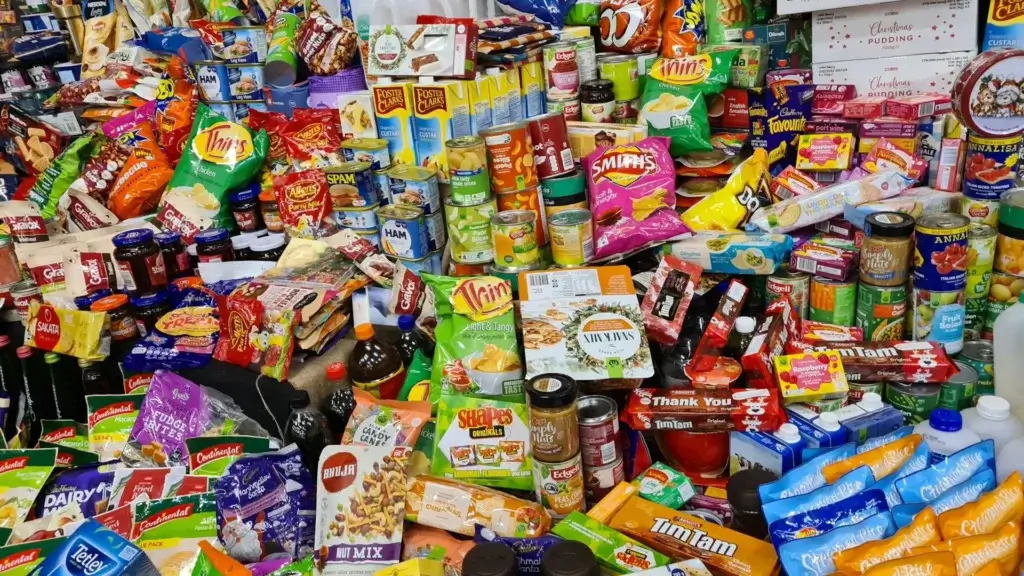
Image Source: Unsplash
While eating out is part of the adventure, packing your own snacks is a lifesaver when traveling on a budget. Snacks bridge the gap between meals, save you from overpriced food in airports or tourist zones, and keep hunger at bay during long bus rides or hikes. Think of them as your personal food insurance policy.
Start with easy, non perishable snacks. Granola bars, nuts, crackers, and dried fruit are lightweight, filling, and won’t spoil easily. Instant noodles or oatmeal packets are great for hostel stays where you have access to hot water. Even a small stash of chocolate can be a morale booster on a long journey.

Image Source: Amazon
Blue Diamond Almonds Whole Natural Raw Snack Nuts, 100 Calorie Travel Bags, 32 count
If you’re flying, having snacks in your bag means you won’t be forced to pay ridiculous airport food prices. On road trips or train rides, snacks keep you from splurging at convenience stores along the way. Plus, they give you flexibility you’re not pressured to eat at the first restaurant you see just because you’re starving.
In many destinations, you can also stock up on cheap local snacks from grocery stores or markets. Trying regional snacks is both fun and affordable. For instance, you might pick up mochi in Japan, empanadas in Argentina, or plantain chips in the Caribbean.
Healthy snacks are especially important if you’re traveling in places where cheap food options are often greasy or fried. Carrying fruits, yogurt, or simple sandwiches ensures you always have a budget friendly, nutritious backup.
Packing snacks may sound boring, but it’s one of the most practical ways to save money and stay energized. Think of it this way: every snack you pack is one less overpriced meal you’ll be forced to buy on the road.
Balancing Cheap Eats with Splurge Meals
Let’s face it eating cheap all the time isn’t always fun. Part of the joy of traveling is treating yourself to special meals that showcase the best of a country’s cuisine. The trick is finding the balance: save money where you can so you can afford to splurge occasionally without guilt.
Start by identifying the “must try” meals in your destination. Maybe it’s sushi in Tokyo, steak in Argentina, or paella in Spain. Instead of eating out at expensive places every day, plan to save for one or two splurge meals that will truly be memorable. This way, you get the best of both worlds: budget dining most of the time, and a few unforgettable food experiences.
Another strategy is to cut costs elsewhere to justify a splurge. For example, cook breakfast and lunch yourself, then enjoy a fancy dinner out. Or skip alcohol for a few days and put that money toward a high end restaurant. Budget travel doesn’t mean denying yourself it means making smart trade offs.
Splurge meals also don’t always mean Michelin starred restaurants. Sometimes it’s worth spending a little extra for a local specialty at a well known spot, even if it costs more than street food. These meals often become highlights of your trip, the ones you remember long after the journey ends.
Finding the right balance keeps you from burning out on cheap eats while still protecting your wallet. Think of your budget as a flexible tool not a prison. Spend wisely most of the time, and you’ll be able to enjoy the occasional indulgence guilt free.
Conclusion – Eating Smart, Traveling Smarter
Eating cheap while traveling doesn’t mean sacrificing flavor, experience, or fun. In fact, some of the best food memories come from budget friendly choices like grabbing a bowl of noodles from a street vendor, sharing a picnic in a park, or cooking with new friends in a hostel kitchen. By planning ahead, shopping like a local, avoiding tourist traps, and embracing cultural dining hacks, you can enjoy authentic meals while keeping your travel budget intact.
The truth is, food is one of the easiest areas to save money when you travel. Every dollar saved on overpriced meals is a dollar you can spend on experiences whether that’s visiting landmarks, extending your trip, or treating yourself to that one splurge worthy meal.
Traveling on a budget isn’t about denying yourself; it’s about being resourceful and intentional. With a little creativity, you’ll discover that cheap food often leads to the richest experiences. After all, it’s not the price tag that makes a meal special it’s the story, the culture, and the people you share it with.
FAQs
1. What is the cheapest way to eat while traveling?
The cheapest way is to mix grocery shopping, street food, and cooking simple meals in hostels or Airbnbs. Markets and street vendors usually offer the best balance of price and authenticity.
2. How do I avoid food poisoning from street food?
Stick to stalls with long lines of locals, watch for cleanliness, and eat freshly cooked food. Avoid anything that looks like it’s been sitting out for too long.
3. Is it cheaper to cook or eat out while traveling?
Cooking is usually cheaper, especially in expensive destinations. However, in places with low cost street food, eating out can sometimes be just as affordable.
4. What snacks are best for budget travel?
Non perishables like nuts, granola bars, dried fruit, crackers, and instant noodles are ideal. They’re cheap, filling, and easy to carry.
5. How much should I budget daily for food when traveling?
It depends on the destination. In Southeast Asia, $10–15 per day can be enough, while in Europe or North America, you might need $25–40 daily to eat comfortably.

